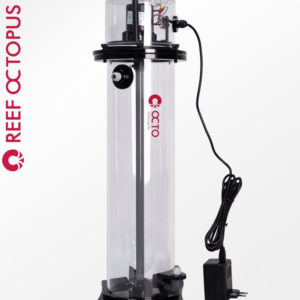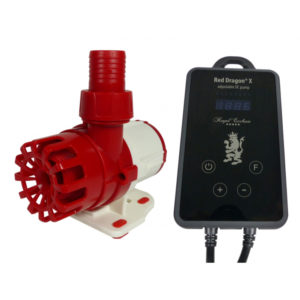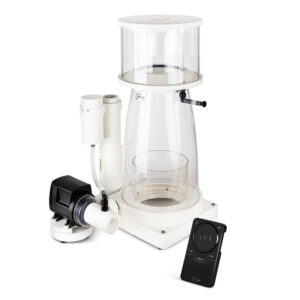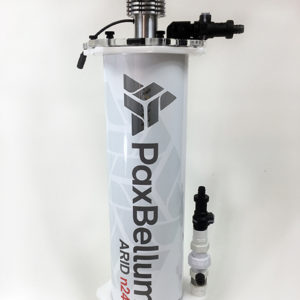During all my years keeping reef tanks I have always stuck by what has worked for me and resisted change. For instance, I have had great results using metal halide lighting for my SPS dominated tanks and have resisted jumping on the LED bandwagon despite the success of others using this type of light.

In fact, I like to use a particular “system” or a standard set of equipment to run a reef tank and have been hesitant to change an individual component given my fear it would upset the balance of the tank. One of those components is Granular Ferric Oxide (GFO) and I have always used it to keep phosphates in check, despite my love/hate relationship with it.
On the plus side it is rather simple to use and one does not need to be well versed in water chemistry. Add it to a media reactor, test for phosphates along the way and replace it when levels begin to rise. Initial equipment costs are low and it is a very efficient means for reducing phosphate.
Key Reason Why I Ditched GFO – It Can Shock Corals
However, GFO can shock corals if it is used too aggressively, something I witnessed first hand a couple of times. Another big knock against GFO is that it not only binds phosphates but other important trace elements as well. GFO can also be a mess to swap out in a reactor and it can be difficult to use to target desired phosphate levels. Given these downsides I ultimately decided to seek out other alternatives. Yes, the time had come to explore a change!
I honed in on finding a more natural means to reduce phosphates and settled on an ARID algae reactor from Pax Bellum (ARID stands for Algae, Remediation, Illuminated Device). The ARID system exports nutrients by promoting the growth of algae, specifically chaetomorpha (chaeto), inside a chamber lit by LEDs. The advantage with this system versus a refugium is that the tube and flange design isolates the algae from atmospheric C02. In a refugium the algae is pushing through the water and interacts with atmospheric C02, which can lead to yellow water.

Another benefit with the ARID is its ability to export both phosphates and nitrates, a plus versus GFO since it only targets phosphates and allows nitrates to rise. This can be problematic since a system with GFO can become dependent on denitrifying bacteria to consume nitrate. These bacteria are limited in the amount of nitrate they can consume by available carbon, causing some aquarists to turn to carbon dosing to make up for the deficiency. This can lead to a less stable bacterial system and promote the growth of some undesirable pathogenic bacteria. Not good.

Many Additional Benefits With the ARID System
Here are some other advantages with the ARID system:
- Since the ARID is self contained it limits the carbon source for the chaeto to what is respired by the tank\’s inhabitants, greatly reducing excess organics and making it possible to run a system without a skimmer or even a sump.
- Can eliminate water changes if run with the Triton system, which is used to replenish trace elements.
- Ability to control nutrient uptake by ramping up or down photo period.
- No need to repeatedly buy media. Discarded chaeto can be sold, fed to fish or used as compost, something us Vermonters like to do!
- Provides day/night pH stability when run on a reverse light cycle versus the display tank.
- Releases natural amino acids and beneficial compounds into the water.
- Ability to directly take up excess carbon dioxide and phosphate from calcium reactors with an add on calcium injection assembly.
- Higher and more stable dissolved oxygen levels, a key element consumed by a tank’s critters and bacteria.
- Increases water clarity.
- Low energy demand.
Water Chemistry Knowledge is Required
Now the ARID is not going to be for everyone since it will require some knowledge of water chemistry to successfully run the system. And you do have to dose nitrates and other trace elements such as iron, manganese and molybdenum so testing parameters on a regular basis is very important. Additionally, initial equipment costs will be high and you will also have to spend about ten minutes every week or two removing some chaeto and servicing the unit.


Ok, what about an algae scrubber, another type of water filtering device that uses light to grow algae and reduce phosphates? Many folks use them but I hesitated since one manufacturer told me I would have to continue using a limited amount of GFO. In the end, the benefits of the ARID led me to change up my “system” and permanently ditch the GFO component. Yes, you can teach an old dog new tricks, including a reef keeper who tends to be stuck in his ways. Perhaps a switch to LEDs is next 🙂
Additional Resources
If you would like some help with a new tank build, including help designing a custom aquarium, or help re-configuring your current setup then you can visit this page for more information. And if you are looking to add some equipment, I do sell GHL, Pax Bellum, Reef Octopus Calcium and Kalk Reactors and Royal Exclusiv products, including Dreamboxes, which is the equipment I use and recommend. I also sell Reef Brite metal halide and LED fixtures as well as Maxspect & IceCap Gyres.
As for additional insights and information, please explore my many other reef tank and SPS related articles as well as my YouTube channel. For an even deeper dive into reef tank care you can check out my Reef Keeping Master Class. This online course is an immersive and one of a kind educational tool designed to help reef aquarium hobbyists build and maintain a beautiful SPS reef tank. The course is a series of video presentations with some supplemental video from my YouTube channel. There are also quizzes to help students retain and understand the information presented in the course.
Need some frags…..I can help with that as well 🙂 Please visit my SPS Frag store to see what is available.











